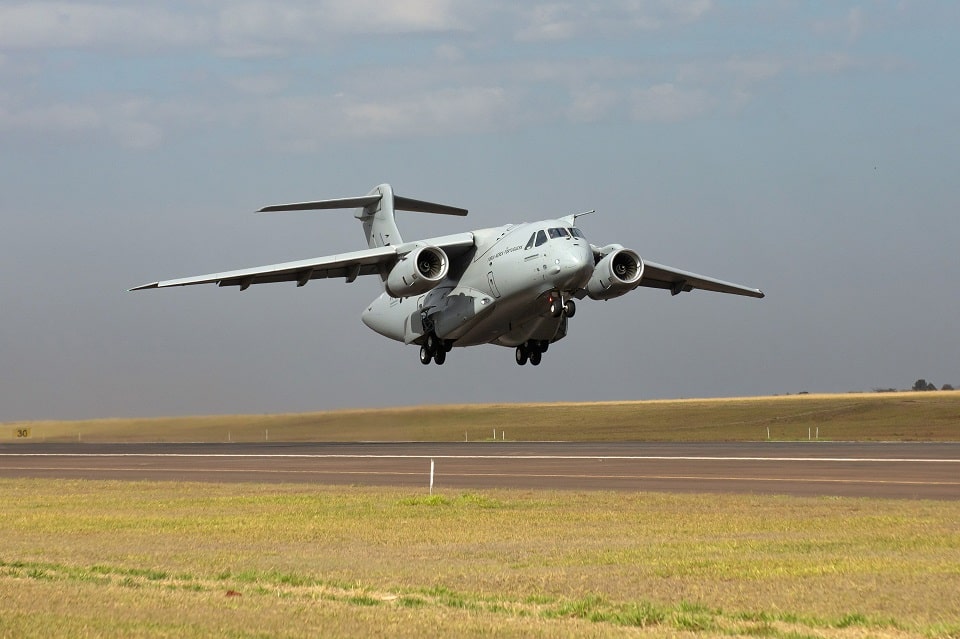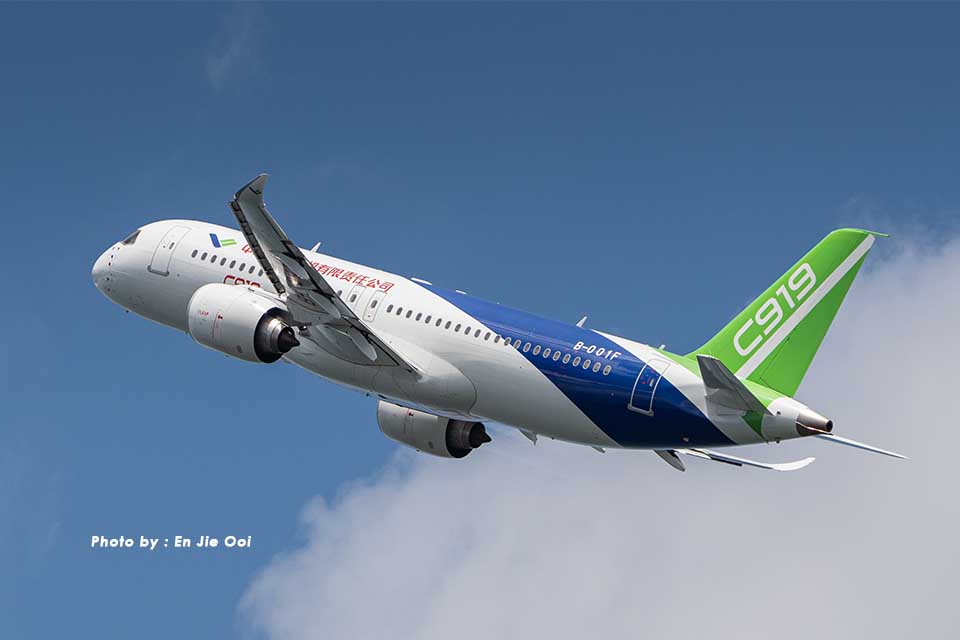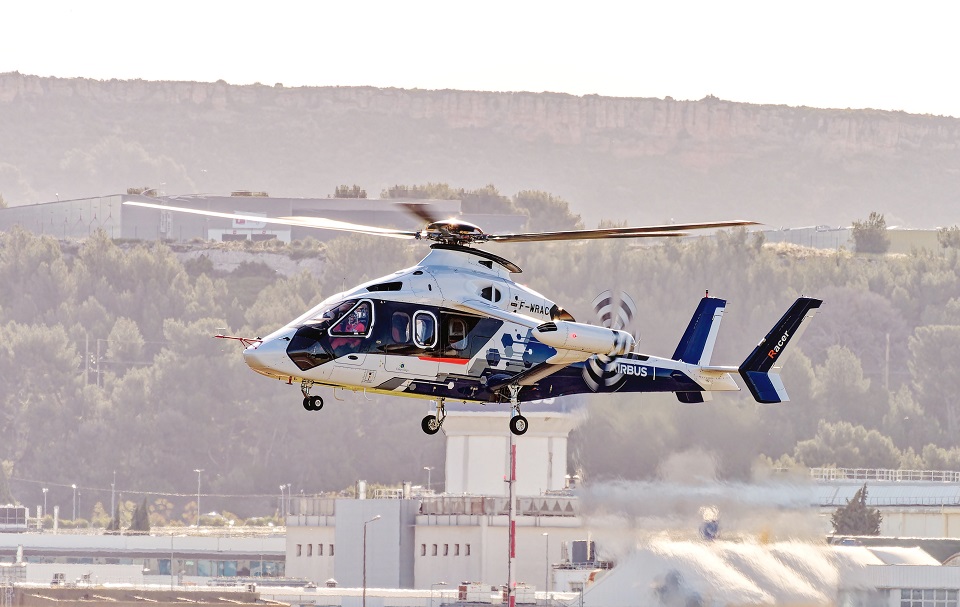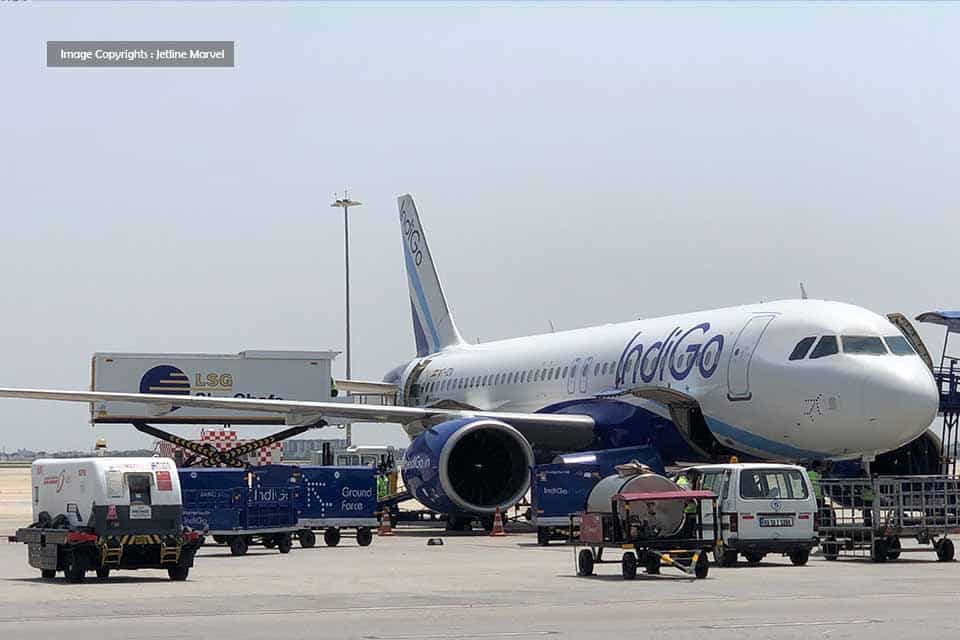Aerospace
Brazil’s Embraer eyes mega transport aircraft deal with IAF

Brazilian aerospace company Embraer said that if it wins the contract to build the C-390 Millennium planes, it will set up an assembly line in India to meet the Indian Air Force’s need for medium transport aircraft. The IAF is planning to replace its aging fleet of AN32 aircraft with 40 to 80 medium transport aircraft.
Under the condition of anonymity, the officials said that the C-130J from US aerospace company Lockheed Martin, the C-390 Millennium from Brazil’s Embraer Defence and Security, and the A-400M aircraft from Europe will compete for the Indian order. This order is anticipated to involve technology transfer and the establishment of a manufacturing line in India for high-level localization.
Qantas and Jetstar discount one million seats in Mega scale.(Opens in a new browser tab)
The 18 to 30-tonne cargo-carrying capacity range is where the IAF is looking for a new transport aircraft. Joao Bosco Costa Junior, president and chief executive officer of Embraer Defence and Security, stated that the company is in discussions with Hindustan Aeronautics Limited (HAL) and certain Indian private firms to examine potential collaboration opportunities to bid for the programme.
The company was setting the framework for a proposal on the IAF order and was in discussions with regional businesses about a potential partnership to submit a bid for the project. The Air Force asked original equipment manufacturers (OEMs) earlier this year for information regarding the aircraft they could provide. The C-390 was on exhibit during the February Aero India 2023 event in Bengaluru.
IndiGo 4 th most punctual airline globally: OAG Punctuality League 2018(Opens in a new browser tab)
The “Single Stage-Two Bid System” must be followed by bidder companies when submitting their offers. In two separate sealed envelopes, each vendor must submit a “Request for Proposal” that combines both technical and commercial bids. The shelf life of the promotional offers must be at least 18 months. A Technical Evaluation Committee (TEC) will assess the technical offers to ensure they are in compliance with the RFP.
Vendors who have equipment that has been approved then go through a “No Cost No Commitment” trial examination in India. To establish whether the equipment is suitable for adoption, a staff review and field assessments are both used in the evaluation process.
Embraer’s aspiration to secure the contract for building the C-390 Millennium planes for the Indian Air Force has prompted discussions about potential collaboration with Indian partners. The competitive bidding process involves technical and commercial evaluations, field trials, and ultimately, the selection of the most cost-effective vendor. This initiative signifies a significant step towards enhancing India’s medium transport aircraft capabilities.

Aerospace
China Developing Comac C939 Wide Body Aircraft to Compete with A350 and B777

China’s Comac aircraft company is currently underway with the development of its own wide-body aircraft, the C939, positioned to compete with industry stalwarts like the Boeing 787 and Airbus A350 in the future. This strategic move by Comac involves crafting the next iteration with enhanced capacity and extended range capabilities, marking a significant leap forward in technological advancement compared to the current C919 aircraft.
Air China has inked a substantial deal worth a staggering $10.8 billion, based on list prices, to acquire 100 Comac C919 jets, signaling a strong vote of confidence in the domestic challenger to aerospace giants Airbus and Boeing.
China Comac C919 Total Order
With both China Southern and Air China combining orders for nearly 200 aircraft, the prospects for the new C919 aircraft appear increasingly promising for future fleet growth. To date, Comac has garnered orders for nearly 1,100 aircraft.
China is contemplating the development of another wide-body aircraft, the C939, poised to significantly bolster the aerospace industry in China.
COMAC has initiated work on the C939, a new wide-body airliner. While design concepts have been formulated, it will still take several years before a prototype materializes, according to reports from the South China Morning Post, citing anonymous sources.
Initially intended to be a joint venture with Russia, plans were halted due to Russia’s decision to safeguard its copyrights and technological advancements within its borders. Consequently, collaboration between China and Russia on aircraft development was discontinued. Sources suggest that China is vigorously pursuing new avenues for the independent development of its own wide-body aircraft, crucial for accommodating larger passenger capacities and extended flight ranges.
Comac C939 competes with Boeing 777 and A350
Information regarding the program remains limited. COMAC has refrained from commenting on the development of the new aircraft type, stating that official announcements will be made in due course. Nevertheless, the C939 could potentially accommodate up to 390 passengers, positioning it to compete with the largest Boeing 777 and Airbus A350 aircraft.
In addition to the prospective C939, COMAC is already advancing with the development of another widebody aircraft, known as the C929. This aircraft is poised to rival the Boeing 787 and Airbus A330, boasting 280 seats and a range approaching 6,500 nautical miles.
Since obtaining certification in late 2022, the COMAC C919 has been operational, accumulating nearly 1,000 firm orders, predominantly from Chinese-owned airlines and leasing companies.
With multiple widebody aircraft in the pipeline, COMAC stands to achieve parity with the two leading international aircraft manufacturers. Boeing, with its 777 and 787 models, and Airbus, with the A330neo and A350, both have a comparable range of offerings. However, Boeing’s aircraft are encountering delays and production challenges despite substantial orders, while the A350 is performing commendably, though the A330neo’s order intake has not met initial projections.
How much does C919 cost?
China is under pressure to fulfill the current orders for the C919 aircraft, prompting plans to expand production facilities across various regions within the country. The aim is to ramp up production capacity for C919 planes to 150 aircraft annually over the next five years. The latest reports indicate that the C919 is priced around $99 million, comparable to the price of Boeing 737 Max and Airbus A320 aircraft, with expectations for further price reductions in the future.
While the C919 has yet to be certified in major aviation markets outside of China, only four have been delivered thus far. In the long term, COMAC’s widebody aircraft will vie for global competitiveness. One potential benefit of COMAC aircraft could be in reducing China’s reliance on Western aircraft manufacturers. However, this shift won’t happen immediately; the current delivery rate of four aircraft in nearly 18 months is not sustainable, and both Airbus and Boeing have established manufacturing facilities in China to cater to its sizable market.
Nevertheless, assuming COMAC addresses the issues impeding deliveries, there’s a plausible scenario where the manufacturer assumes a significant role, particularly as China’s aviation market continues to expand.
As the C939 progresses through its development stages, more details are expected to emerge. Comparisons between official specifications of the C929 and C939 will be noteworthy, as will the initial orders for each aircraft type. However, it’s anticipated that neither will undergo test flights or enter into service for several years.
Aerospace
Airbus Reveals Innovative Hybrid Aircraft, Blending Plane and Copter Designs

Airbus Helicopters has unveiled a groundbreaking innovation in rotorcraft technology with the introduction of an experimental hybrid aircraft, blending the features of a plane and a helicopter.
Named the Racer, this one-of-a-kind demonstrator model integrates traditional overhead rotor blades with two forward-facing propellers, aiming stability with speed. The primary objective behind this engineering marvel is to significantly reduce response times for critical missions such as search-and-rescue operations.
Priced at 200 million euros ($217 million), the Racer represents a pioneering leap in rotorcraft design, poised to revolutionize the industry. Beyond its immediate applications, including search-and-rescue missions, the Racer’s potential extends to military endeavors, aligning with NATO’s ongoing exploration of next-generation helicraft. However, the realization of such prospects hinges upon the alignment of future operational requirements.
Designed to operate at a cruise speed exceeding 400 km/h, the Racer demonstrator is meticulously engineered to strike a delicate balance between speed, cost-efficiency, and mission performance.
Notably, the aircraft targets a notable reduction in fuel consumption, aiming for a 20% decrease compared to contemporary helicopters of similar caliber. This feat is made possible through aerodynamic optimization and an innovative eco-mode propulsion system, developed in collaboration with Safran Helicopter Engines.
The hybrid-electrical eco-mode system allows for the temporary suspension of one of the two Aneto-1X engines during cruise flight, thereby contributing to a reduction in CO2 emissions. Moreover, the Racer seeks to address environmental concerns by focusing on lowering its operational acoustic footprint, showcasing its commitment to sustainability.
Building upon the success of Airbus Helicopters‘ X3 technology demonstrator, which previously pushed the boundaries of helicopter speed by achieving a remarkable 472 km/h, the Racer represents a significant evolution in aerodynamic configuration and technological innovation.
Aerospace
IndiGo to Order 100 Small Planes from Airbus, ATR, or Embraer

IndiGo, India’s leading airline, is in talks with three aircraft manufacturers to acquire a fleet of at least 100 smaller planes, aiming to bolster its regional operations, as per a report by the Economic Times.
The airline’s recent order of 30 A350 aircraft underscores its strategic focus on expanding its reach with wide-body and long-range planes, targeting increased traffic from various regions across the country.
Now, the focus shifts to enhancing connectivity on shorter routes within India’s domestic network, tapping into the regional airline market. IndiGo is currently in discussions with ATR, Embraer, and Airbus for this purpose. With 45 ATR-72 aircraft already in operation, accommodating 78 passengers each, and five more expected this year, the airline is leaning towards ATR, although Airbus A220 and Embraer’s E-175 remain contenders.
Having established itself as a key operator of Airbus A320 aircraft, with over 450 on order for future delivery, IndiGo continues to strengthen its fleet.
This move follows closely on the heels of the recent agreement to purchase 30 Airbus A350-900 aircraft, a significant step that will facilitate the airline’s expansion both domestically and internationally. This deal marks IndiGo’s entry into the wide-body aircraft segment, further solidifying its position in the market.
IndiGo’s strategy includes penetrating tier 1, 2, and 3 cities within India’s regional aviation market using smaller aircraft.
As India maintains its status as the world’s fastest-growing aviation market, airlines are striving to meet the escalating demand amid challenges faced by aircraft manufacturers in meeting production targets.






















